This post may contain affiliate links. Please read my disclosure.
Have you ever wanted to cook butternut squash that perfectly soft and buttery, but also crisped and caramelized on the edges? This sous vide butternut squash recipe allows you to do just that!
Slow cooking this winter squash makes it so tender and buttery, and warm spices like nutmeg and sweet honey bring out the warmth and sweetness of the butternut squash.
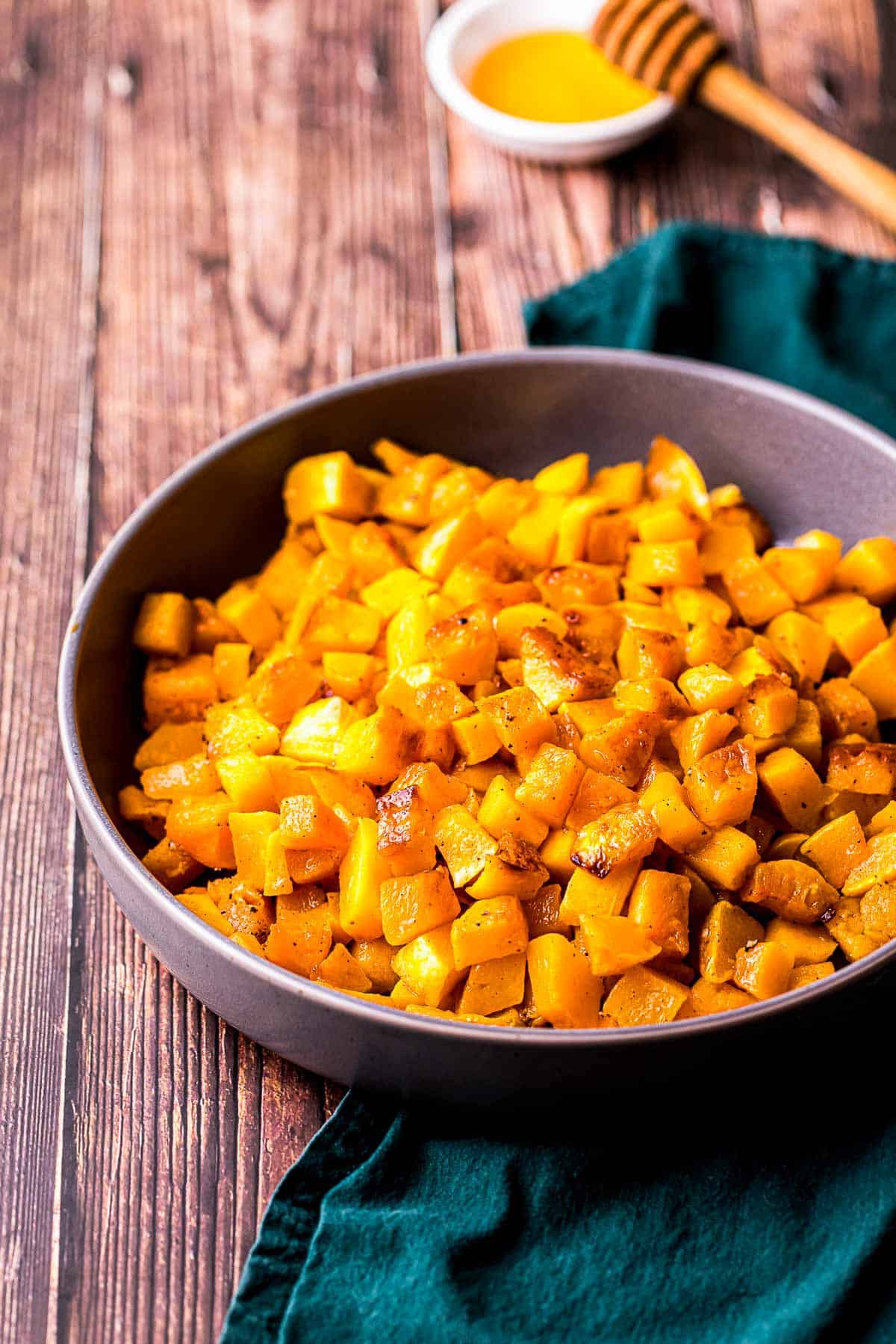
When I think of fall, I think of butternut squash. With a touch of honey, butter, and some warm spices...nutmeg, cinnamon, cloves...all the good stuff.
And if you like this, I think you'll love these brown butter sous vide parsnips also!
It the epitome of fall. And making it sous vide makes it so so so so (did I say so?) easy. It's great for holiday meals because while you're busy doing all the other stuff, this just cooks away in the background.
But it's also great for meal prep as winter squash really holds up well to reheating as well as using in salads, sauces, soups, etc.
Jump to:
Why This Recipe Works
- Cooking it with warm spices and honey brings out the sweetness and warmth of this winter squash.
- Can be used for healthy meal prep OR as a sweet and savory holiday dinner side dish.
- You don't have to worry about over or undercooking it because the sous vide cooks it to the exact temp very time.
- You can use the squash to make butternut squash soup as well - just omit the seasonings and skip the caramelization at the end!
- It can be dressed up however you like - add extra butter, top with crème fraiche, chop and use in salads, mash it, put it in soup (we like it in this turkey lentil soup or this turkey and dumplings)
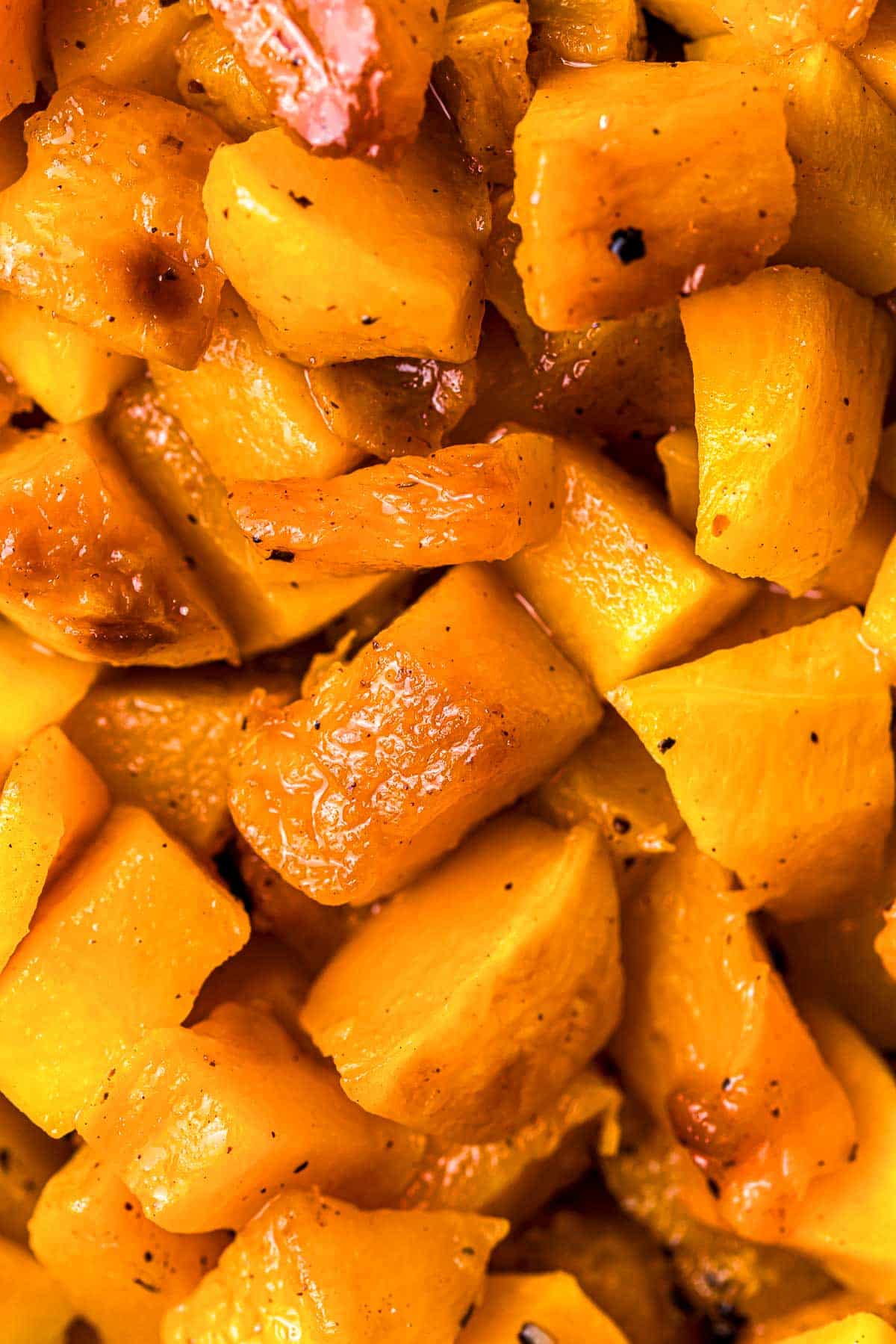
Want to Save This Recipe?
Enter your email & I'll send it to your inbox. Plus, get great new recipes from me every week!
By submitting this form, you consent to receive emails from Went Here 8 This.
What is Sous Vide?
Sous vide is basically a method of cooking using what is called an immersion circulator (i.e. the sous vide machine). This immersion circulator circulates water in a temperature controlled water bath at a certain temperature to perfectly cook your food every time.
Because the temperature doesn't change, and it keeps your meat (or dessert, veggies, etc.) at the same temperature, your risk of overcooking becomes very minimal.
To learn even more about sous vide cooking, head over and read "what is sous vide cooking and the benefits of sous vide cooking."
What is the Water Displacement Method?
The displacement method is where you slowly submerge a ziplock bag in water pushing the air out of the top of the bag (the bag should be slightly open at the top to allow air to escape).
Use a clip (I use sous vide magnets) to clip the bag to the side to keep it from floating and getting air and/or water inside.
Tools Used
You will also want to check out these posts on the best sous vide containers and the best sous vide bags for more information!
If you don't have a lot of experience cooking sous vide yet, you may want to pop over and read what sous vide cooking is and the benefits of sous vide cooking.
Ingredients
The full list of ingredients and amounts is included in the recipe card at the bottom of this post.
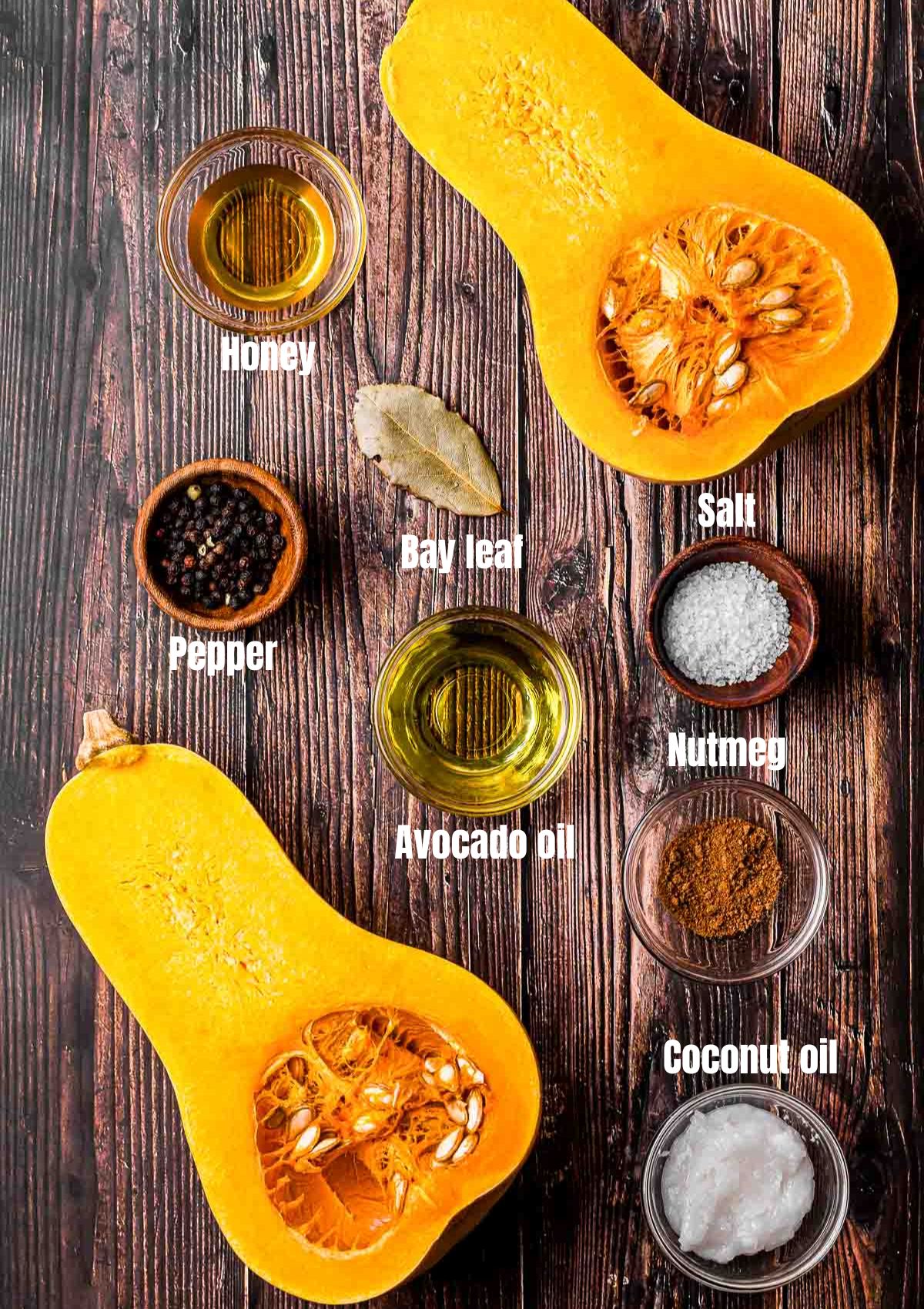
You can either use a whole butternut squash and cut it up (I've included instructions in the recipe) or you can just use already cut up squash.
If I can find it, I will always use the cut up as it is so much easier to not have to cut a squash (and safer).
I love a touch of nutmeg as it adds a nice warmth to the squash. You could also add a clove, a touch of cinnamon or even a tiny splash of vanilla if you want.
And maple syrup can be used in place of the honey if you're trying to keep this vegan.
I always like to finish any caramelized vegetable with a sprinkle of a flaky salt like Maldon.
Step By Step Instructions
Heat a sous vide water bath to 185°F (85C).
Cut the butternut squash in half and use a spoon to scoop out all the seeds and stringy parts.
Cut it in quarters, then carefully cut away the skin from each quarter.
Cut the peeled squash in 1 ½ to 2" pieces.
Place the squash in a bowl with all the ingredients (except avocado oil) and toss to fully coat it.
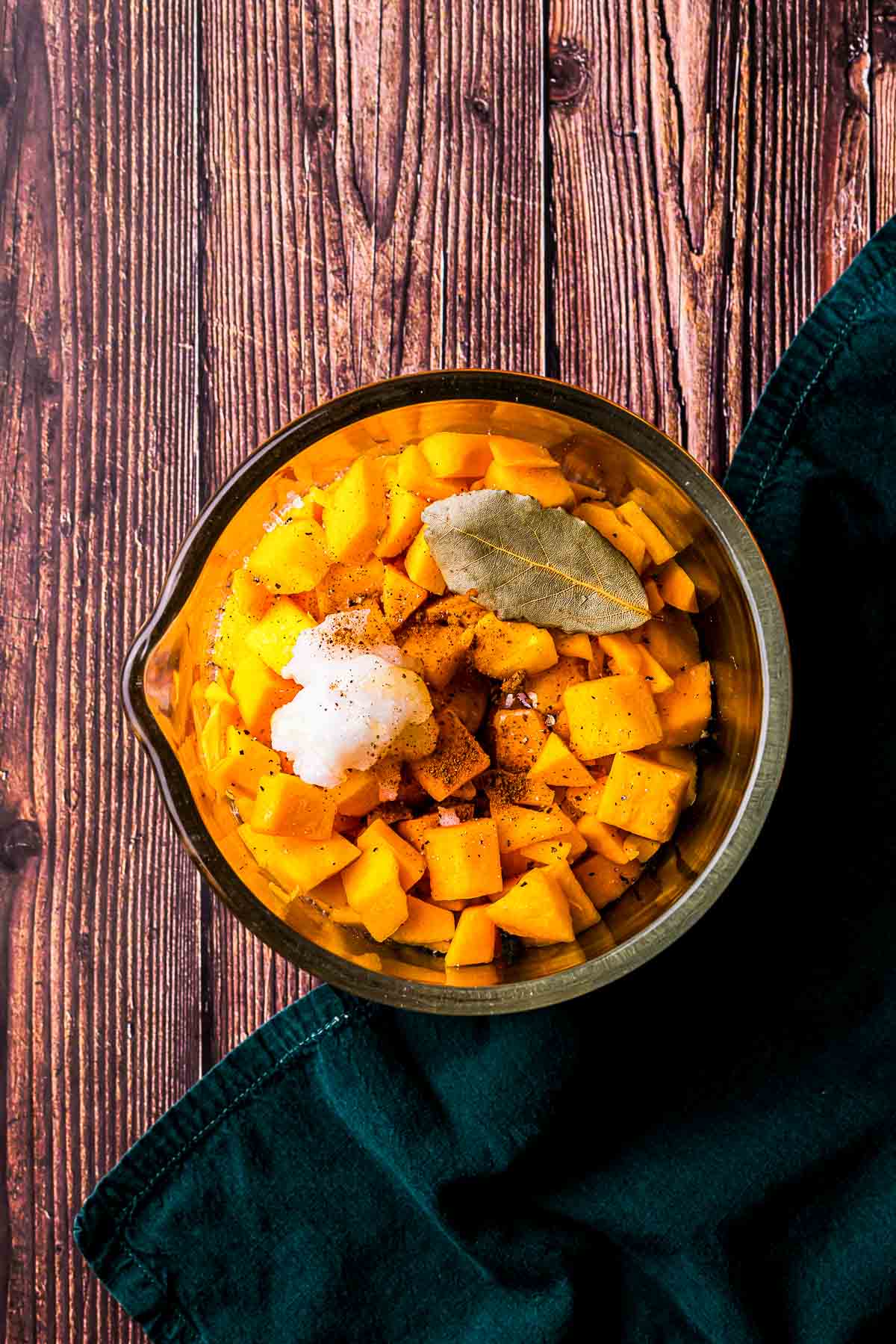
Place the squash in a vacuum seal bag and seal (or a Ziplock bag if using the water displacement method).
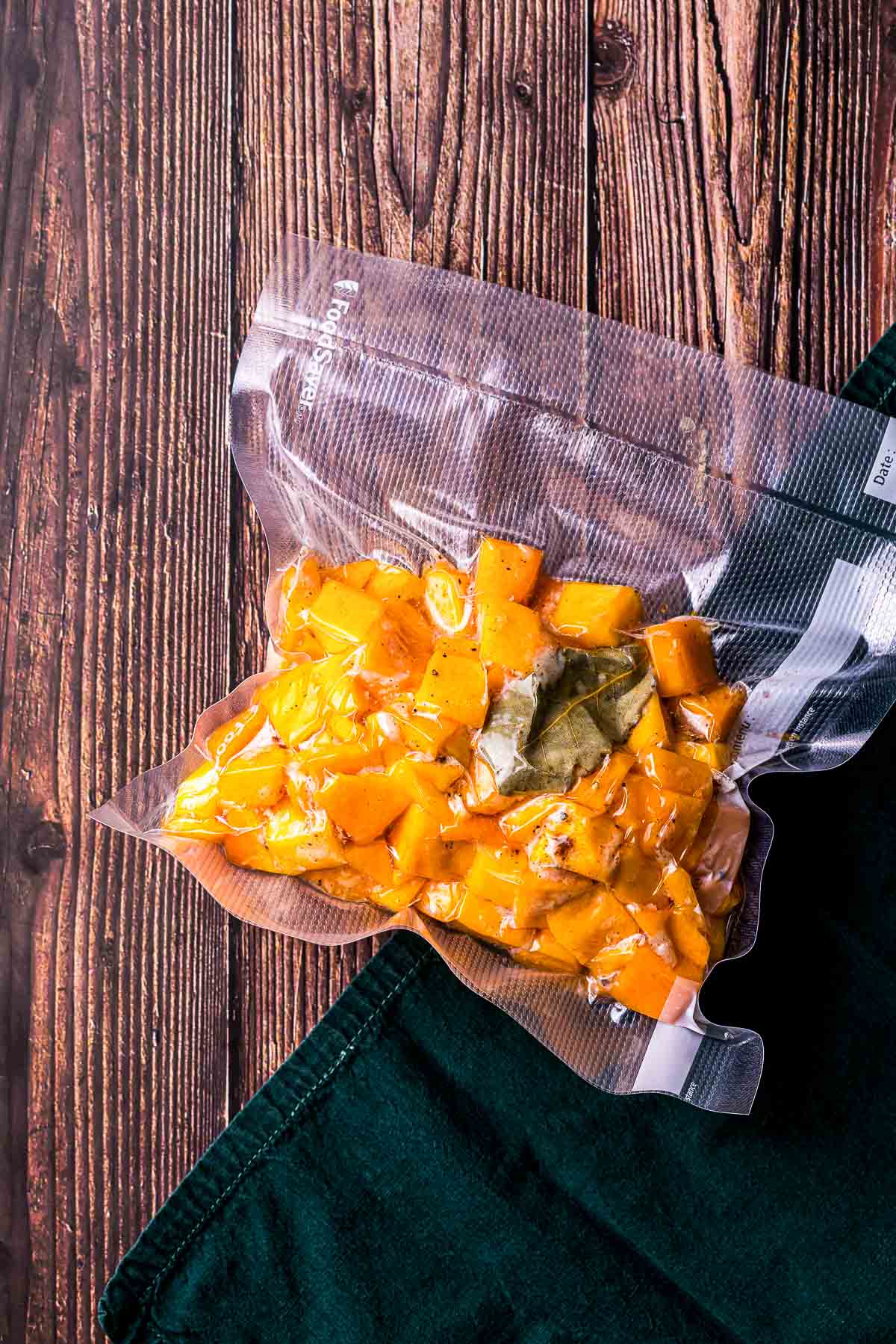
Place in the water bath and cook for 60 minutes, being sure to weigh it down so it doesn't float.
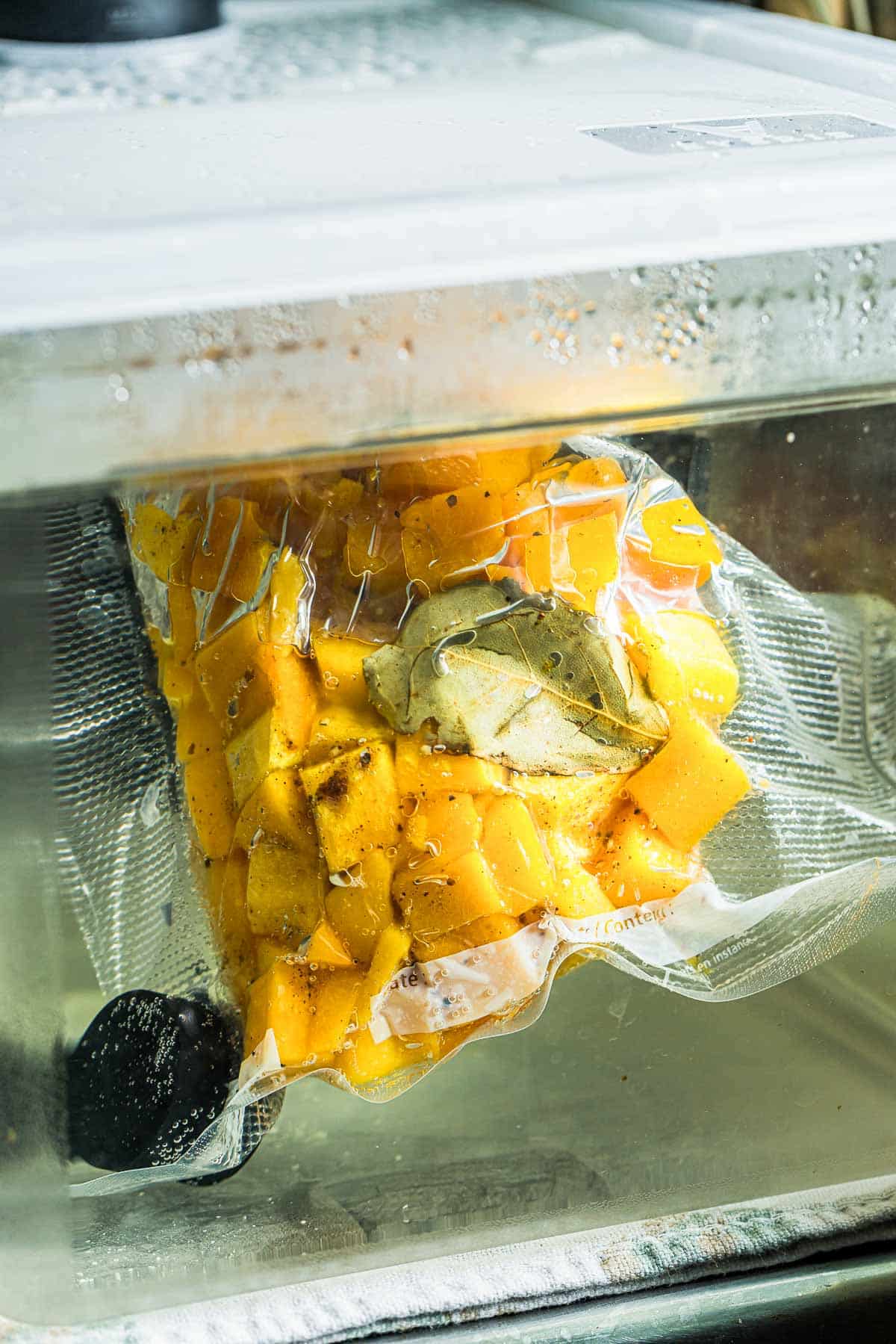
Remove from the water bath, open the bag and pour the liquid in a bowl and set aside.
Heat a skillet over medium high heat and add the avocado oil.
Add the butternut squash and cook for 2-3 minutes on each side, checking frequently to ensure it is not burning.
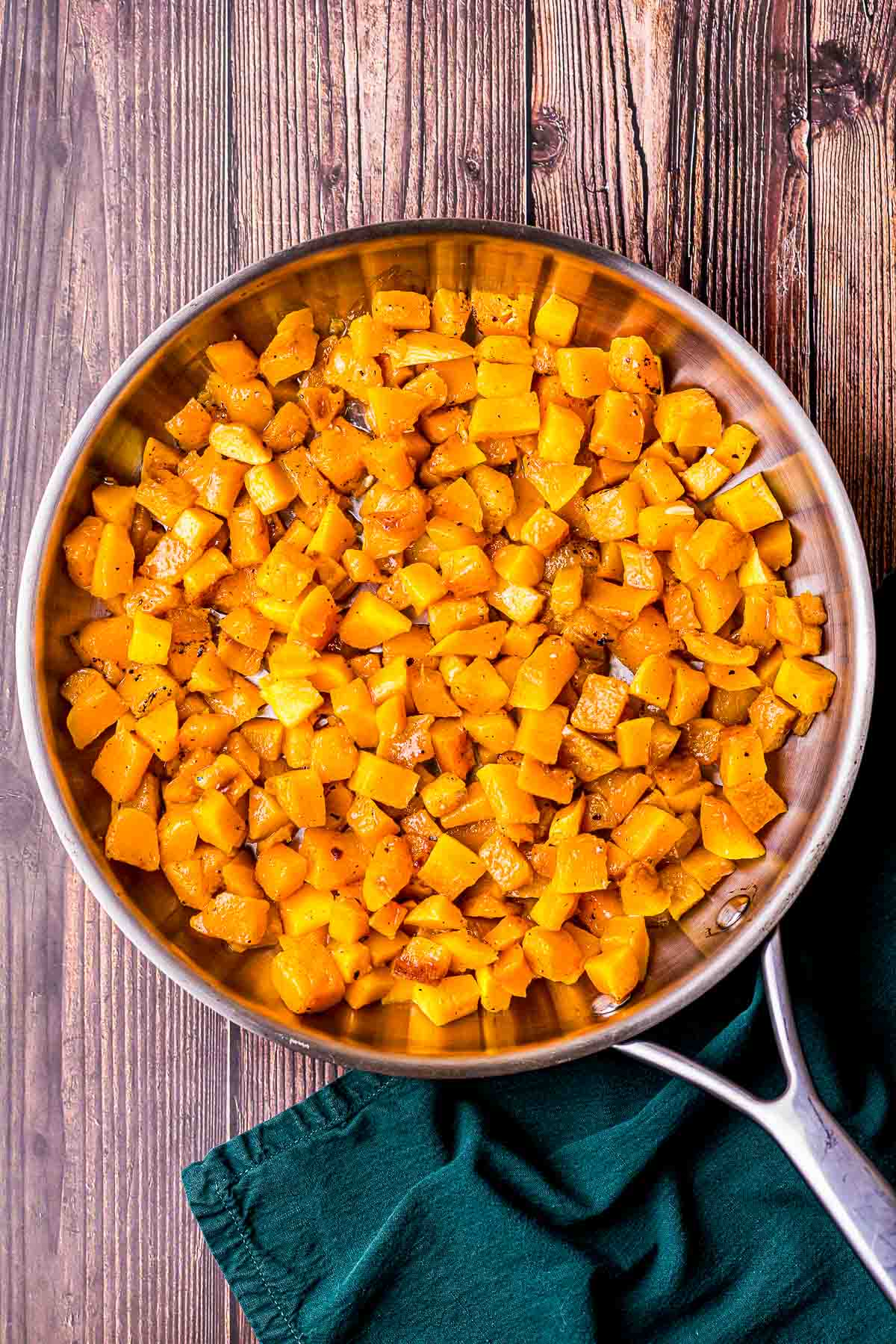
The outside should be light to medium brown and caramelized.
Once caramelization of two sides have occurred (you'll flip the pieces once), add the reserved cooking liquid back in and cook it until all the liquid evaporates.
Remove and serve hot sprinkled with flaky sea salt.
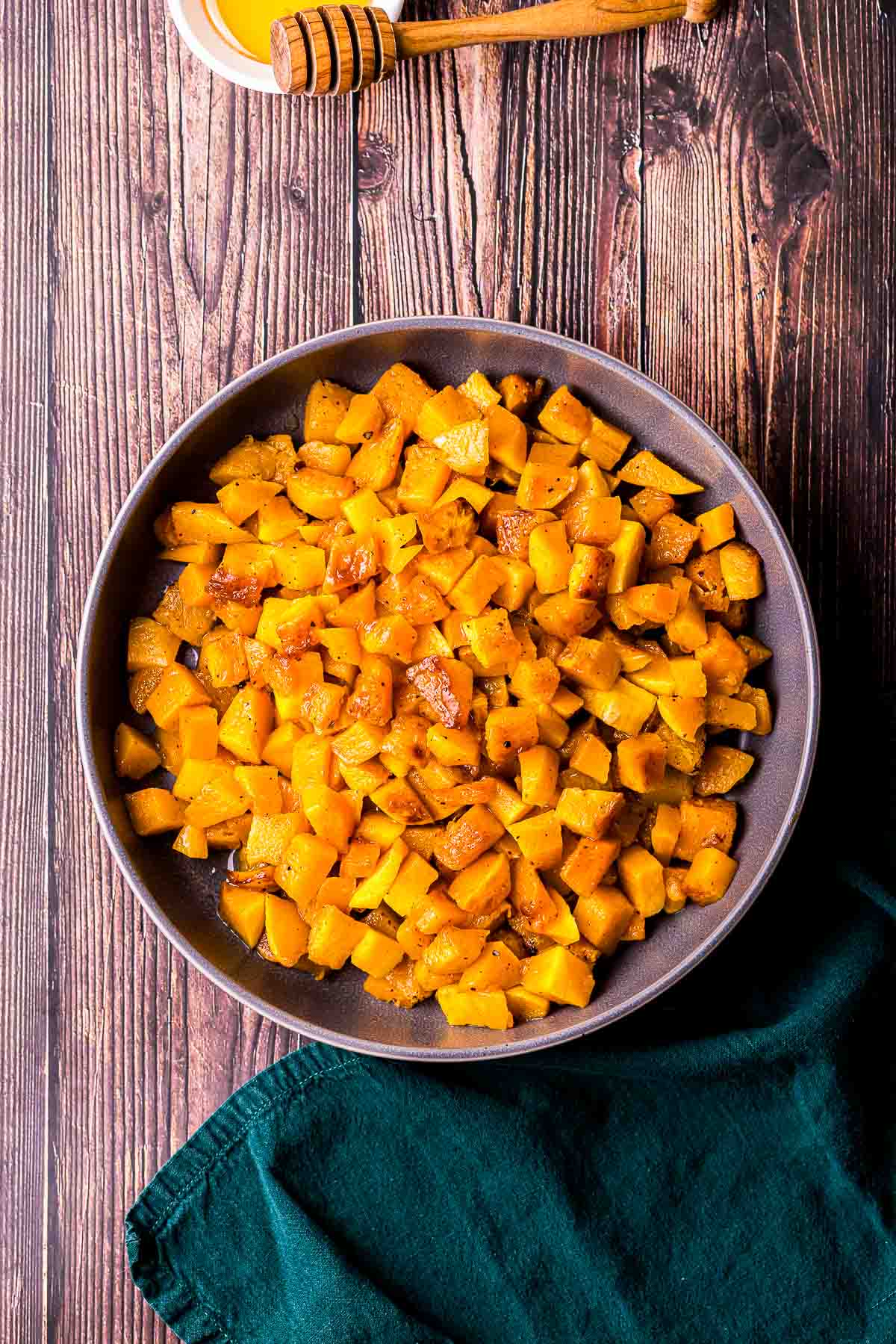
Expert Tips
- Vegetables tend to float so make sure you either weigh the bag down or use these sous vide magnets to keep the bag submerged below the water line.
- Use a sharp knife to cut the squash otherwise you run the risk of the knife slipping and cutting you. Be careful.
- You can save the seeds if desired, toast them and sprinkle on top for a little crunch.
- Watch the squash while it caramelizes to ensure it doesn't burn. The sugar will cause it to darken quickly.
- Adding the bag cooking liquid in at the end will help scrape all the stuck bits off the bottom of the skillet, and add extra flavor to the squash.
- Avocado oil is my favorite oil for high heat cooking, but you can substitute any high smoke point cooking oil.
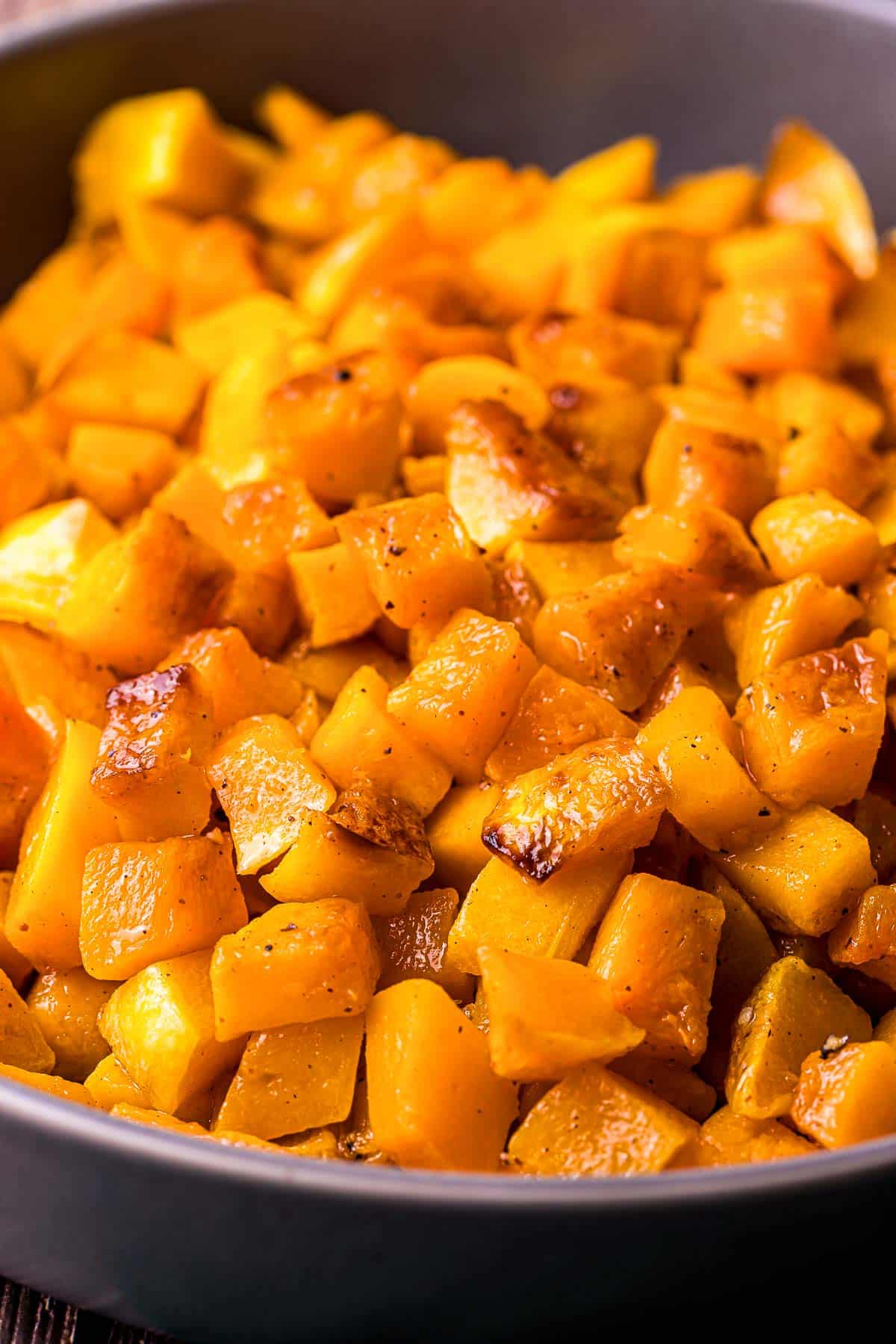
Serving Options
What I love about sous vide butternut squash is it's versatility - the ability of it to work well in sweet and more savory dishes. These are some fun cooking options, as well as great ways to use leftovers:
- Dice it up and serve it in a winter salad with candied pecans, sous vide beets, arugual and spinach (or whatever you like in your salad).
- Chop it up and use it in this butternut squash stuffing.
- Use it in this butternut squash and red pepper soup.
- Mash it to make mashed butternut squash (mash before caramelizing it).
- Use it to make ravioli or tortellini filling.
- Make butternut squash pie (instead of pumpkin pie).
- Dice it and add it to pasta, pizza or risotto.
Frequently Asked Questions
If you leave it in the water bath for more than the recommended cook time, the squash will continue to get softer and softer. Also, if you cook it at too high of a temperature, it can get too soft and soggy.
The skin on butternut squash tends to be tough so it is best to remove it before cooking.
If you cook it at too high of a temperature or for too long, your squash could become overcooked and overly soft and/or soggy.
Storage and Reheating Options
Leftovers can be stored in an airtight container for up to 5 days. Reheat in the microwave or on the stovetop.
The squash can also be made in advance and placed in an ice bath for 15 minutes, then stored in the fridge (still in the vacuum seal bag) for up to 5 days. Just finish in a skillet according to the recipe instructions when you are ready to serve it.
If you love this recipe, please leave a star rating and a comment below and let us know your favorite thing about it. We'd also love to connect on Instagram! Follow us at @went_here_8_this for awesome recipes and all sorts of fun food stuff 🙂
Recipe
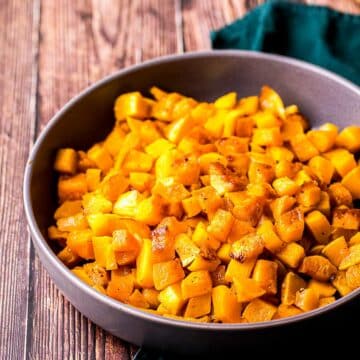
Sous Vide Butternut Squash
Ingredients
- 1 whole butternut squash substitute 1 pound cubed butternut squash
- 1 teaspoon salt
- ¼ teaspoon black pepper
- 1 tablespoon coconut oil
- 1 bay leaf
- ¼ teaspoon ground nutmeg
- 1 tablespoon honey
- 1 tablespoon avocado oil for caramelizing
- Flaky sea salt like Maldon (for serving only)
Instructions
- Heat a sous vide water bath to 185°F degrees.
- Cut the butternut squash in half and use a spoon to scoop out all the seeds and stringy parts.
- Cut it in quarters, then carefully cut away the skin from each quarter.
- Cut the peeled squash in 1 ½ to 2" pieces.
- Place the squash in a bowl with all the ingredients (except avocado oil) and toss to fully coat it.
- Place the squash in a vacuum seal bag and seal (or a Ziplock bag if using the water displacement method).
- Place in the water bath and cook for 60 minutes, being sure to weigh it down so it doesn't float.
- Remove from the water bath, open the bag and pour the liquid in a bowl and set aside.
- Heat a skillet over medium high heat and add the avocado oil.
- Add the butternut squash and cook for 2-3 minutes on each side, checking frequently to ensure it is not burning.
- The outside should be light to medium brown and caramelized.
- Once caramelization of two sides have occurred (you'll flip the pieces once), add the reserved cooking liquid back in and cook it until all the liquid evaporates.
- Remove and serve hot sprinkled with flaky sea salt.
Expert Tips:
-
- Vegetables tend to float so make sure you either weigh the bag down or use these sous vide magnets to keep the bag submerged below the water line.
-
- Use a sharp knife to cut the squash otherwise you run the risk of the knife slipping and cutting you. Be careful.
-
- You can save the seeds if desired, toast them and sprinkle on top for a little crunch.
-
- Watch the squash while it caramelizes to ensure it doesn't burn. The sugar will cause it to darken quickly.
-
- Adding the bag cooking liquid in at the end will help scrape all the stuck bits off the bottom of the skillet, and add extra flavor to the squash.
-
- Avocado oil is my favorite oil for high heat cooking, but you can substitute any high smoke point cooking oil.
Nutrition
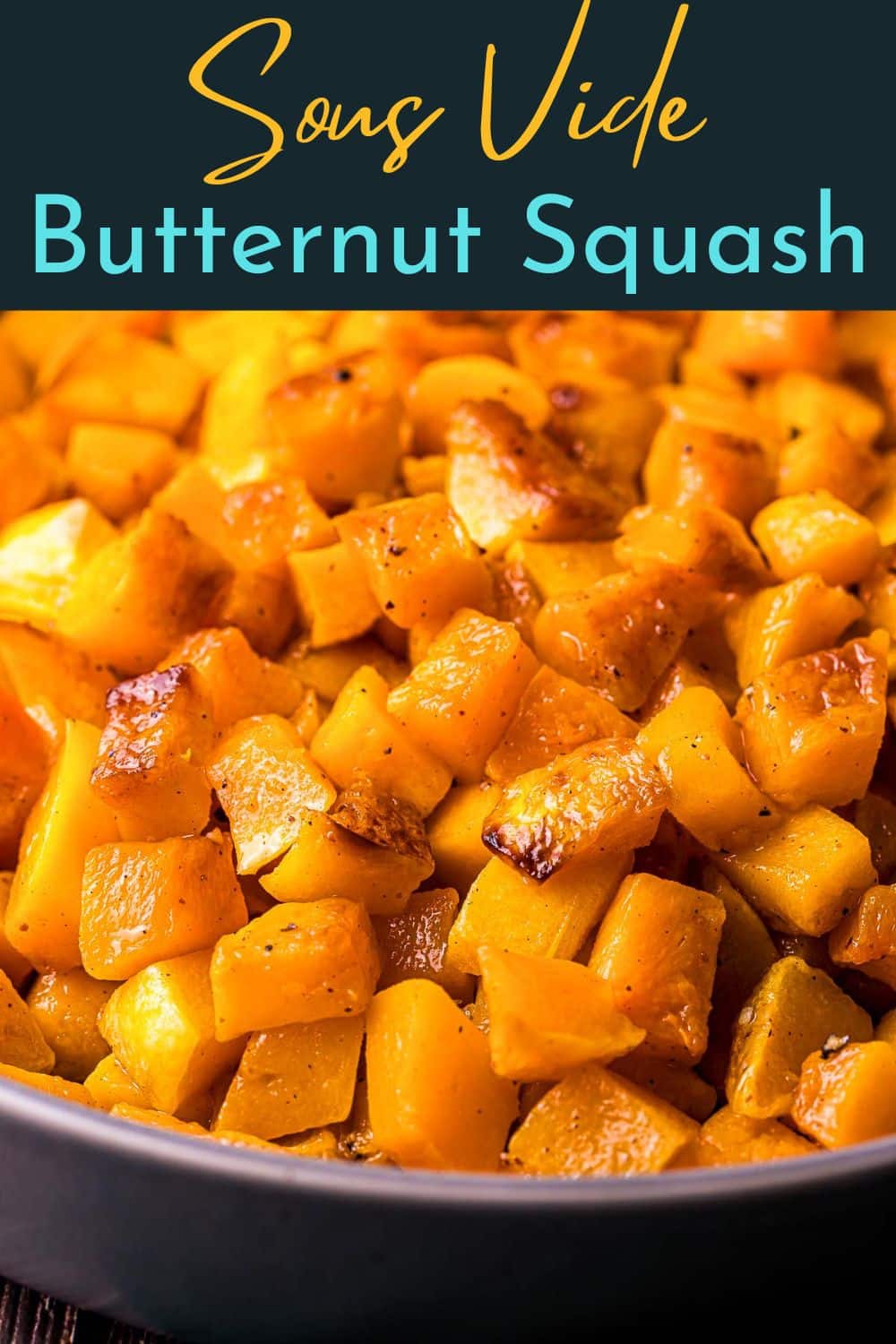


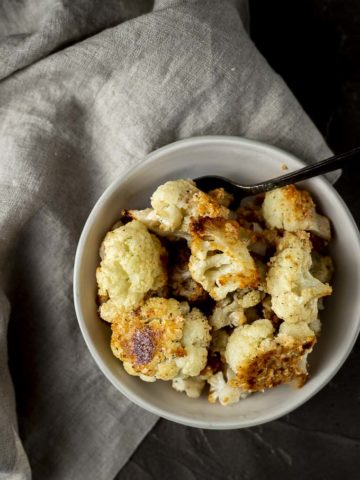
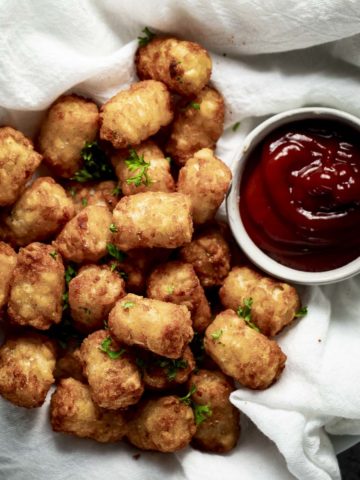
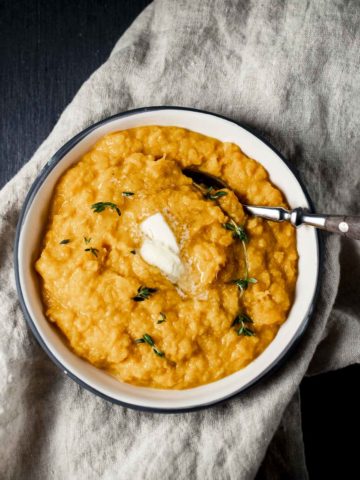
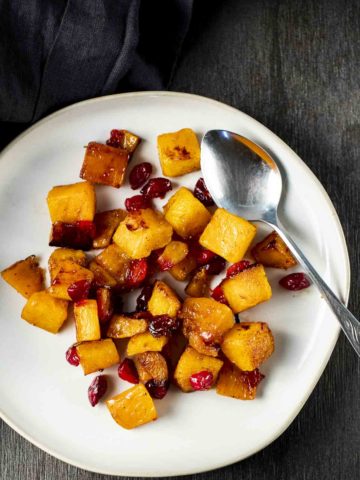
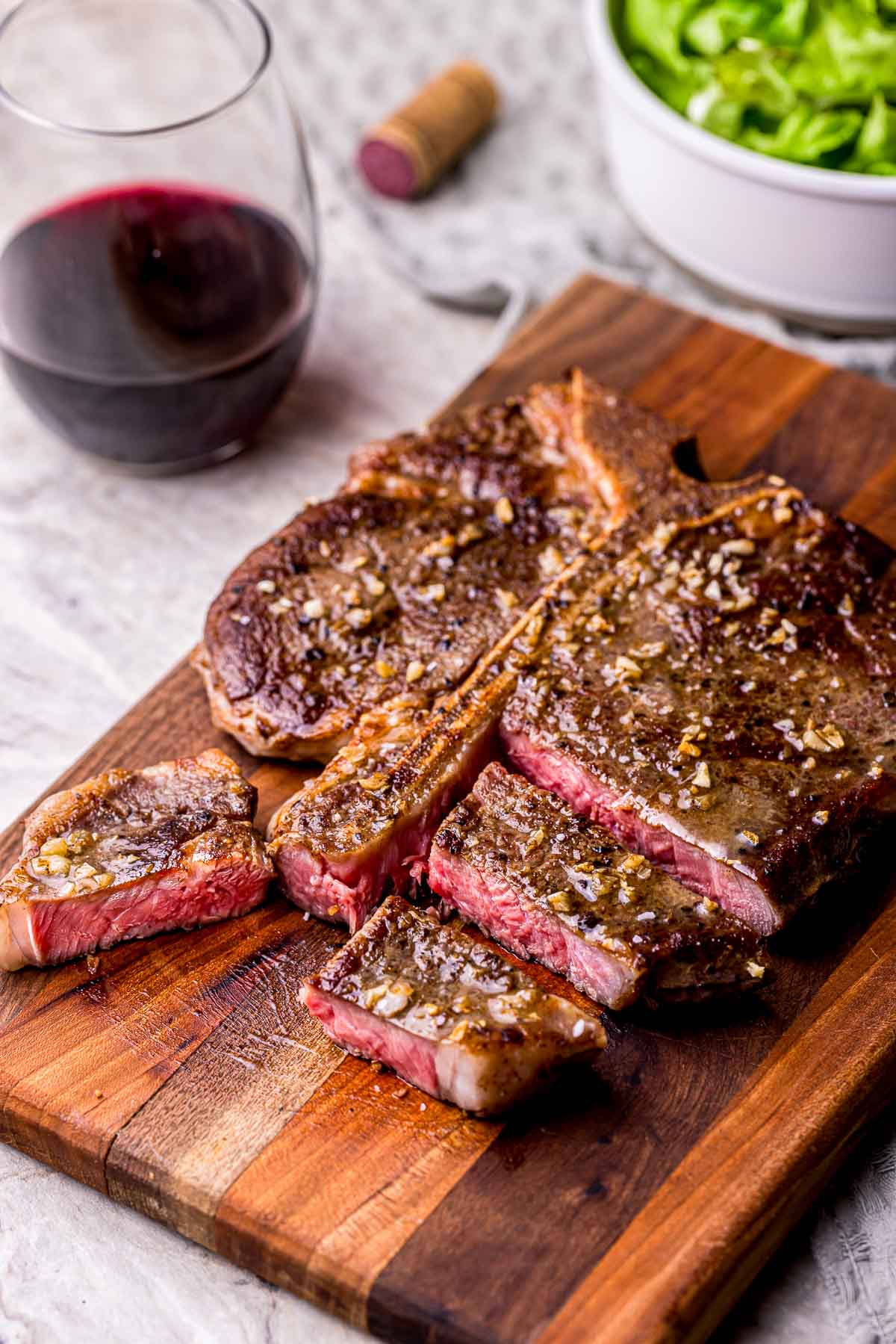
Jessica
Super excited to make this for thanksgiving. I’ve made a similar butternut squash sauté but never used my sous vide to cook it first. Can I sous vide the squash a day or two ahead of time and day of being to room temp and sauté and serve? Thanks for sharing and any advice!
Danielle
Yes, definitely! Being able to sous vide in advance is what makes it so convenient for the holidays 🙂
Lynn
I thought I might like this for Thanksgiving so I tried it and it's perfect! Definitely going to be great for the holiday.
Danielle
So glad to hear it!